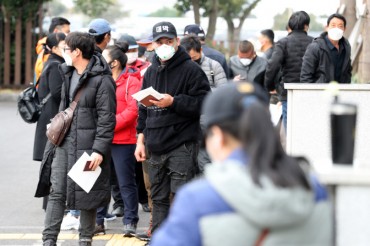
Groundwater samples from a monitoring point near Yongsan Garrison in Seoul. (image: Seoul Metropolitan Government)
SEOUL, Dec. 21 (Korea Bizwire) — Benzene, at levels 1,170 times the government-set safety limit, has been detected among other toxic chemicals in groundwater near Yongsan Garrison in Seoul, the former site of the headquarters of the U.S. Forces (USFK) in Korea, Seoul metropolitan government said Friday.
The government said the levels of toxins above the allowable limit were detected in 27 out of 62 observation wells, or monitoring points installed to observe changes in groundwater over a specific time period.
At 16 out of 41 monitoring points near Noksapyeong Station near the garrison, toxic substances from groundwater samples was found to exceed environmental safety limits. Free-floating oil was also detected.
The city government’s latest survey also found problematic levels of toxic substances from groundwater samples from 11 out of 21 monitoring points near the garrison’s Camp Kim. Total petroleum hydrocarbons (TPH) as high as 291 times the permissible limit were detected in the samples.
Benzene is known to cause cancer and TPH is a large family of several hundred chemical compounds that originally come from crude oil. Crude oil is used to make petroleum products, which can contaminate the environment.
The city government has conducted surveys on how much the environment of the area around the garrison is contaminated and cleaned it up since 2001, when a case of oil contamination was detected near the subway station.
Due to the city government’s efforts, benzene concentrations near the station have dropped 40 percent from 2004 and TPH concentrations near Camp Kim have fallen 95 percent from 2008. But the levels of the two toxic chemicals are above the allowable limits stipulated in the groundwater law.
The metropolitan government attributed the excessive levels of the chemicals to the existence of oil dregs caused by oil leaks inside the garrison in the past.
USFK relocated to Pyeongtaek, 70 kilometers south of the capital, in June after decades in the heart of Seoul. The area will be turned into a park after USFK service members and the U.N. Command move to Pyeongtaek by the end of the year.
(Yonhap)






